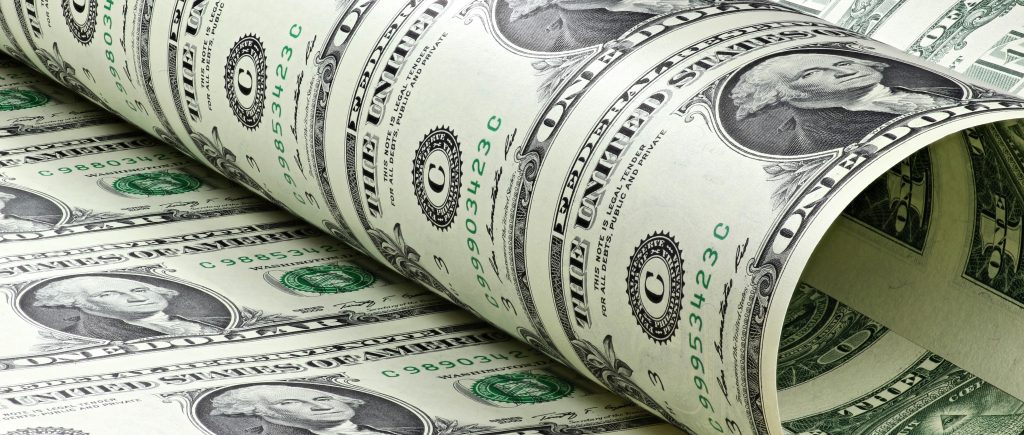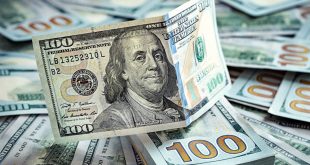The U.S. dollar lingered at its weakest level against the euro since September 2021 on Tuesday, driven by growing fiscal concerns surrounding President Donald Trump’s tax-and-spending bill and continued uncertainty over trade deals.
Investors are increasingly betting on a more aggressive pace of monetary policy easing by the Federal Reserve this year, particularly with a series of significant U.S. economic data set to be released later in the week, culminating in Thursday’s highly anticipated nonfarm payrolls report. This, coupled with investor sentiment weighed down by the ongoing trade uncertainty, prompted the dollar to lose further ground, leaving the euro hovering near a four-year high of $1.1808. According to LSEG data, the euro surged 13.8% in the January-June period, marking its strongest first-half performance ever.
Dollar Faces Pressure Amid Fiscal and Trade Concerns
Sterling, meanwhile, remained steady at $1.3739, not far from the three-and-a-half-year high it touched last week. The Japanese yen also firmed up to 143.77 per dollar, having gained 9% in the first half of the year, marking its strongest performance since 2016.
The U.S. Dollar Index, which tracks the currency against a basket of six major counterparts, slipped to 96.612, its lowest point since February 2022. Analysts are pointing to multiple factors driving the dollar’s weakness, including U.S. fiscal concerns and structural risks linked to erratic trade policies and President Trump’s continued criticism of the Federal Reserve.
The dollar has seen its biggest first-half drop since the free-floating currency era began in the early 1970s, down more than 10%. This has led to a reassessment of the U.S.’s economic exceptionalism narrative, with some analysts noting that foreign investor appetite for U.S. assets has waned.
Impact of Trump’s Fiscal and Monetary Policies on the Dollar
Investor sentiment has been further dampened by ongoing uncertainty surrounding Trump’s tax-cut and spending bill, which is facing internal opposition within the GOP and staunch Democratic resistance. The bill, projected to add around $3.3 trillion to the U.S. national debt over the next decade, has raised concerns about the country’s fiscal stability. The looming uncertainties around this fiscal policy have contributed to the dollar’s weak performance and prompted some investors to look for diversification options.
Meanwhile, President Trump continues to target the Federal Reserve and its Chairman, Jerome Powell, calling for more aggressive rate cuts. Trump has criticized Powell’s approach and even suggested that Powell should resign. In his latest public tirade, Trump presented a list of central bank interest rates from around the world, along with handwritten comments suggesting that the U.S. rate should be between Japan’s 0.5% and Denmark’s 1.75%.
The consistent attacks on Powell and the Fed have raised concerns about the central bank’s independence, with investors fearing that political interference could erode the Fed’s credibility. With mounting pressure from Trump, there is speculation about how Powell will respond during his upcoming testimony at the European Central Bank forum in Sintra, Portugal. Currently, traders are pricing in a 67 basis point easing from the Fed in the remainder of 2025, with Goldman Sachs forecasting three quarter-point cuts this year.
Focus on Nonfarm Payrolls and Employment Data
The release of June’s nonfarm payrolls report on Thursday will likely set the tone for the next phase of dollar trading. Economists expect that the U.S. economy added 110,000 jobs in June, down from 139,000 in May. The unemployment rate is anticipated to edge higher to 4.3%, up from 4.2% last month. Investors will be closely watching this data for any signs of weakness in the labor market, which could prompt the Fed to consider further rate cuts.
This data, coupled with the ongoing fiscal and trade uncertainties, will likely have a significant impact on market sentiment and the U.S. dollar’s trajectory. Despite signs of economic resilience, concerns about inflationary pressures and the risks of rising tariffs remain a key focus for investors.
Trade Tensions and Tariffs: July 9 Deadline Looms
In the background, U.S. trade tensions continue to cast a shadow over the dollar’s performance. With the July 9 deadline for President Trump’s tariffs approaching, uncertainty over potential trade deals is keeping investors on edge. Trump expressed frustration with ongoing U.S.-Japan trade negotiations, particularly criticizing Japan’s rice import practices. Treasury Secretary Scott Bessent also warned that countries could face sharp tariff hikes despite ongoing trade talks.
These tariff concerns, especially with major trading partners like Japan, India, and the European Union, are further exacerbating market anxieties about global economic growth. Investors fear that escalating trade disruptions will hurt global demand for U.S. goods, undermining the dollar’s position as the world’s dominant currency.
Dollar Faces Continued Weakness
With a combination of fiscal uncertainties, trade policy risks, and the possibility of more dovish monetary policy, the U.S. dollar is likely to continue facing downward pressure in the coming months. Investor sentiment will remain heavily influenced by President Trump’s policies and the Fed’s actions, particularly with regard to interest rates. Additionally, the approaching deadline for trade deals and tariffs could further complicate the dollar’s outlook.
As the economic landscape shifts and the Federal Reserve grapples with the challenges of managing inflation and employment, the U.S. dollar’s trajectory will depend on how these factors evolve. For now, the dollar’s relative weakness is expected to persist, with traders closely monitoring the upcoming data releases and geopolitical developments that could further shape market expectations.
 Noor Trends News, Technical Analysis, Educational Tools and Recommendations
Noor Trends News, Technical Analysis, Educational Tools and Recommendations





